Rhino release: Endangered animals despatched to Rwanda
"It's just fantastic.
"These animals were taken from Africa decades ago to display to the public [in European zoos] and now have a real conservation role in Rwanda," Mark Pilgrim, Chester Zoo's chief executive says proudly.
He is summing up the significance of the largest transportation of rhinos from Europe to Africa to ever happen.
It culminated on Monday as five zoo-born eastern black rhinos were released in the vast Akagera National Park.
The three females and two male rhinos, aged between two and nine years old, came from Flamingo Land in Yorkshire, the Czech Republic's Dvur Kralove safari park and Ree Park Safari in Denmark.
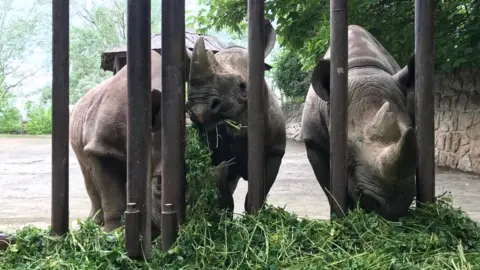 Victoria Gill
Victoria Gill The 6,000km (3,700 miles) journey began at Dvur Kralove - where the animals have been gathered to be prepared for the trip since late last year - and concluded as each animal stepped out of its custom-made transport crate and into a large, temporary enclosure in the 1,000 sq km park.
They will remain in the enclosure, known as a boma, for several months until vets and wildlife experts, who stay in a nearby camp, are happy that they have settled and are ready for life in the wild.
Rhino dating game
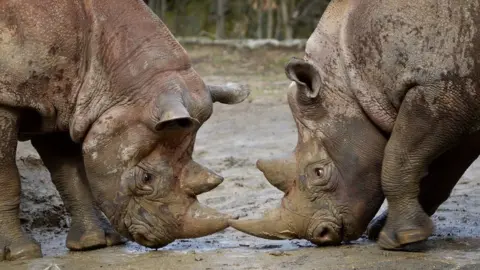 D Stempa
D StempaThe animals' journey to Akagera, via a flight from Prague to the Rwandan capital of Kigali, took around 30 hours. But the project to bring these animals back to Africa began years ago.
The European Association of Zoos and Aquaria has co-ordinated what Dr Pilgrim described as a huge "rhino dating game" and it is something he has been running.
"All the members signed up to move animals around, so we can match the most compatible pairs for breeding," he said.
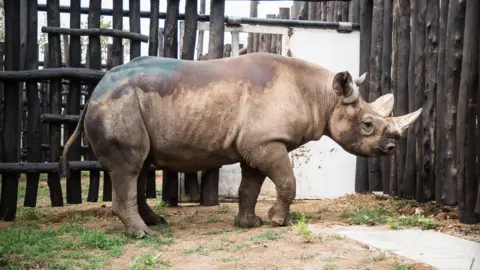
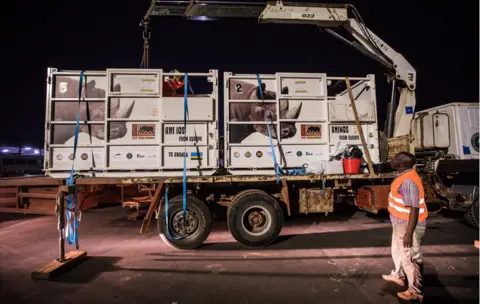 Scott Ramsay lovewildafrica.com
Scott Ramsay lovewildafrica.com"We have 25 [zoos and parks] that hold black rhinos and for the last 12 years, people have moved rhinos around the continent to make the breeding programme work."
This has been so successful that almost 10% of the entire global population of the critically endangered subspecies - the eastern black rhino - now reside in captivity in Europe; 94 animals out of an estimated 1,000 that remain in existence.
"The animals being released are the descendants of rhinos that - more than 40 years ago - were taken from East Africa and transported to Europe's zoos for display," explains Jan Stejskal, head of international programmes at Dvur Kralove. "This is the perfect opportunity to take them back to their homeland."
Under armed guard
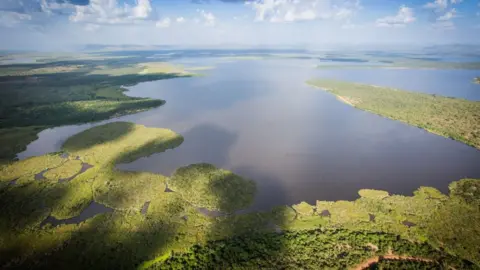 Scott Ramsay
Scott RamsayProbably the biggest concern when planning this release was to find a place where the animals would be safe. The threat of poaching remains, with the demand for rhino horn apparently shifting from its perceived medical value (it actually has none) to a demand for jewellery and other valuable "trinkets" carved from it.
This persistent threat has meant finding a national park with an armed security force and high tech anti-poaching solutions. Akagera, which is managed by the conservation organisation African Parks in partnership with the Rwandan government, fits the bill.
The translocation represents a significant moment for Rwanda's natural history. Rhinos have previously been wiped out twice in the country by poaching - once during the 1940s and 50s, when their horns were in demand to make dagger handles, then again in 2010.
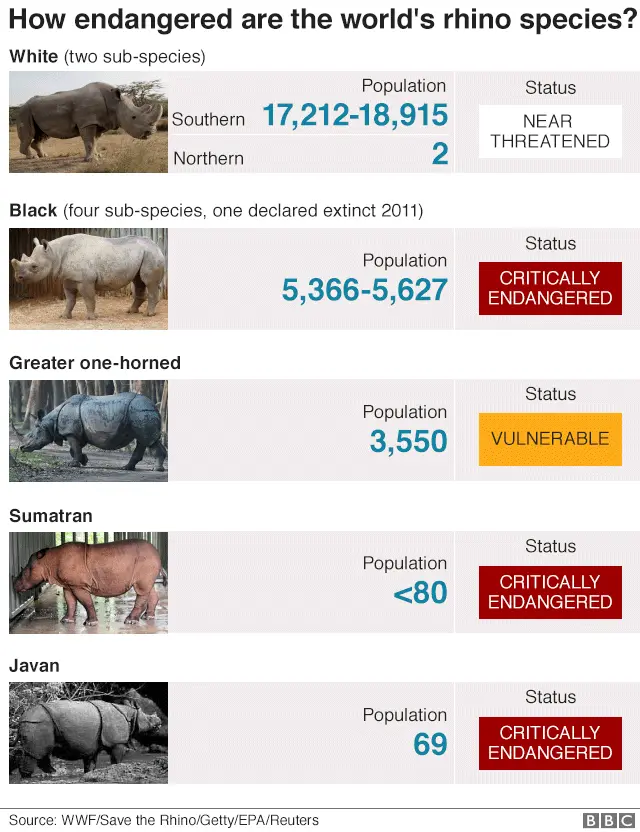

Eastern black rhinos were brought back to Akagera, from South Africa, in 2017. But that reintroduction was tinged with tragedy when a conservationist named Krisztian Gyongyi, who was monitoring the animals in the park, was killed by one of the rhinos.
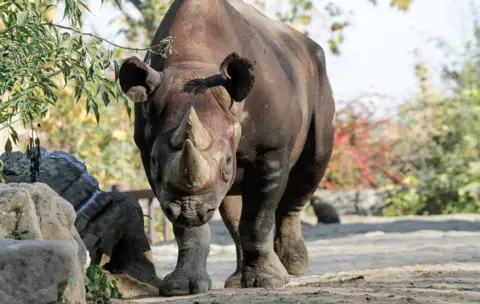 S Jirickova/Safari Park Dvur Kralove
S Jirickova/Safari Park Dvur KraloveThis carefully planned release of the five specifically selected zoo rhinos, the team hopes, will be a new chapter in Rwanda ecotourism.
Clare Akamanzi, chief executive officer of the Rwanda Development Board, said that today, poaching was "almost non-existent in our four national parks".
"We are confident that these rhinos will thrive in their natural habitat in Akagera."
Dr Pilgrim added: "I genuinely believe there is nowhere safer in Africa right now than this national park."
Taking their very first steps on African soil, five critically endangered animals have no idea that scores of people - in Rwanda and across Europe - will be rooting for them.
